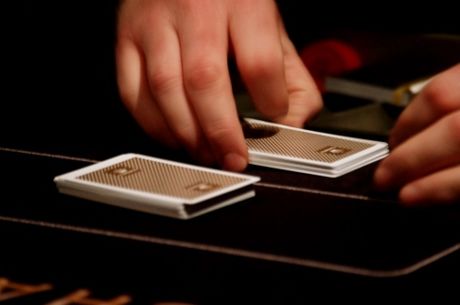10 Texas Hold'em Tips: The Check-Raise

You've learned Texas hold'em and like many first starting out want to play as much as you can. Say you've made your first deposit online or had an initial taste of live poker at a casino. You want to get back to the tables, but know you should brush up on your poker strategy first in order to increase your chances of winning.
This series of articles is designed to introduce new players to a variety of no-limit hold'em tools that can help them improve their results right away. We'll be focusing on certain useful hold'em moves, common situations and concepts, and other good practices frequently followed by winning players.
Today we'll start with a discussion of the check raise, an important postflop move for any cash game or tournament player.
What is a Check-Raise in Poker?
A check-raise is a two-part move made after the flop in no-limit hold'em — a player checks, another bets, and the first player responds by raising. For relatively new players the check-raise may represent one of the first examples of "thinking ahead" with their decisions, since the initial check is done (or should be done) with an intention of raising after an opponent bets.
By definition, you check-raise when you are "out of position" versus an opponent (or multiple opponents). That is to say, you check first, wait for a player with position on you to bet, then check-raise. One benefit of the check-raise, then, is to overcome the disadvantage of having to play out of position.
Generally speaking, there are two purposes for check-raising — as a value bet (when you have a strong hand that figures to be better than your opponent's) or as a bluff (when you have a weak hand that is likely behind your opponent's).
Check-Raising as a Value Bet
Say a player in late position raises and you call from the big blind holding 6♦6♥. The flop then comes K♦9♣6♠ to give you a set of sixes — a very strong hand that is likely way ahead of your opponent.
You could lead with a bet, although since you only just called the preflop raise, betting out would be a conspicuous play. It also would give your opponent a chance to fold right there if the flop missed his hand. By checking, you invite the player to make a continuation bet, something most players will do after having raised before the flop — a good thing, as you want the pot to get bigger whenever you have an especially strong hand like your set of sixes.
You could then check-raise after your opponent's flop bet, although understand that the check-raise is often construed as an aggressive play — that is, it is a show of strength (whether true or a bluff). Check-raising this flop against a player who has missed it entirely will likely earn a fold by many players, meaning you've won a little more though perhaps not as much as you could have.
Another reasonable play here would be to check-call the flop, then save the check-raise for the turn when the pot is even bigger and your opponent may well improve to a good second-best hand he's going to be less inclined to fold.
If you do decide to check-raise with a strong hand, be reasonably sure that your opponent will bet if you check, since there's nothing worse that checking down a big hand without any additional chips going into the pot. If you doubt your opponent will bet, forgo the check-raise and lead with a bet in order to get more value from your good hand.
To sum up, you want three conditions to be in place when check-raising for value:
- You have a stronger hand than your opponent(s).
- You are reasonably sure your opponent will bet if you check.
- You believe check-raising to be a better way of building a pot than leading with a bet.
Free Poker Odds Calculator
Calculate your poker odds FOR FREE with the PokerNews odds calculator!
Check-Raising as a Bluff
Most players will check-raise for value more often than they will check-raise as a bluff, although the latter play can be especially effective given a favorable set of circumstances.
As with check-raising for value, the bluff check-raiser is checking while anticipating an opponent will be betting, thereby providing the opportunity to check-raise. Since the move is being made as a bluff, the player making it believes both (1) the opponent has a better hand and thus the pot probably can't be won if the hand goes to showdown, and (2) the "story" of the bluff is going to be a believable one, thus being more likely to work and earn a fold.
Let's say you're in the big blind again, and once more you've decided to call a late position player's preflop raise, this time holding J♥10♥. The flop then comes 7♣6♦5♠. You check, and your opponent again makes a continuation bet.
With J♥10♥, your hand has little potential going forward — in fact, checking and then folding isn't a bad option at all (and probably should be your action much of the time).
But look at that 7♣6♦5♠ flop. What are the chances it helped the preflop raiser's hand, which much more likely has big cards than ones that match the ones on that flop? And think also about your possible hands, which are perhaps more likely to contain medium or low cards than is true for your opponent.
In other words, the flop favors your "range" a lot more than his, which means if you check-raise — a show of strength, remember — that's going to be scary for an opponent who has nothing more than ace-high or king-high.
Check-raising as a semi-bluff can also be an effective play — that is, check-raising with what is probably the worst hand but with a chance of improving with a straight or flush draw. Say instead of J♥10♥ you had A♥8♥ when the flop came 7♣6♦5♠ — you could check-raise that flop as a semi-bluff, hoping to win the hand right there but at least having an open-ended straight draw should you get called.
As with the check-raise value bet, think first about whether check-raising is actually a better option than simply leading out with a bet as a bluff. Against a tight opponent whom you don't think will continuation bet, it obviously would be better to lead with a bet than to check-raise.
Also, against a loose opponent who seems to call everything, be aware that a check-raise may not elicit the fold you desire, especially since certain players hate to fold after having committed chips.
Free Beginner Poker Sites
Playing online poker for free is the best way to hone your poker skills and practice with no risk.
Final Thoughts
We have two final caveats to add for those starting to incorporate check-raising into their postflop repertoire of moves, whether playing live or online poker.
First and foremost, don't check-raise as an afterthought after checking to an opponent without a plan what to do next. As mentioned above, the check-raise is a two-part postflop play that requires you think ahead, knowing when you check that you'll be raising after your opponent bets.
Secondly, don't check-raise just for the sake of making a showy, "fancy" play. Remember, you're check-raising because it's the best way to build a bigger pot (if it's for value) or the best way to elicit a desired fold (if it's a bluff).
Also in this series...
- Playing Suited Connectors
- The Fundamentals of Set Mining
- Pot Odds Basics
- Bluff Catching
- Slow Playing Do's and Don'ts
- Calculating Your Win Rate
- The Importance of Position
- 5 Common Poker Tells to Look For
- Bet Sizing
Best Sites to Test your Texas Hold'em Check Raise
Texas Hold'em Poker Check Raise FAQs
What is a check-raise in Texas Hold'em?
A check-raise is a move in Texas Hold'em where a player initially checks (i.e. chooses not to bet) on their turn, with the intention of raising when another player places a bet after them. This strategic tactic is used to build the pot and gain more value from a strong hand.
When should I use a check-raise in Texas Hold'em?
Check-raises are usually employed when you have a strong hand and want to induce your opponents to put more money into the pot. It can also be used as a bluff to make your opponents fold. It's crucial to consider the dynamics of the game, your opponents' tendencies, and the community cards on the board when deciding to check-raise.
Is check-raising risky?
While check-raising in itself is not inherently risky, it can backfire if it is used inappropriately. To minimize the risk when check-raising, you should have a clear understanding of your opponents' playing style and the strength of your hand.
Are there any rules or limitations on check-raising in Texas Hold'em?
In most Texas Hold'em games, there are no specific rules or limitations on check-raising, as long as it follows the general betting rules of the game. However, some house rules or specific tournament rules may have restrictions or conditions on check-raises, so it's important to be aware of those if you're playing in a structured setting.
Article last updated 20 Oct 2023
In this Series
- 1 10 Texas Hold'em Tips: The Check-Raise
- 2 10 Texas Hold'em Tips: Playing Suited Connectors
- 3 10 Hold'em Tips: The Fundamentals of Set Mining
- 4 10 Hold'em Tips: Pot Odds Basics
- 5 10 Hold'em Tips: Bluff Catching
- 6 10 Hold'em Tips: Slow Playing Do's and Dont's
- 7 10 Hold'em Tips: Calculating Your Win Rate
- 8 Poker Positions Explained: the Importance of Position in Poker
- 9 Common Poker Tells: How to Read People in Poker
- 10 10 Hold'em Tips: Bet Sizing









